








| Comma Butterfly (Polygonia c-album (Linnaeus, 1758)) |









|
|
Scientific name: Polygonia c-album (Linnaeus, 1758) Common name: Comma Butterfly French name: Robert-le-diable Order: Lepidoptera Suborder: Rhopalocera Family: Nymphalidae Subfamily: Nymphalinae Wingspan: 45-50 mm Biotope: Woods, hedgerows, meadows, parks and gardens. Geographic area: Europe, Asia to Japan, except Northern Siberia. North Africa. Flight time: From June to the first cold days. Number of generations : 2 Caterpillar: Black, orange and spiny with a clear dorsal white stripe. Host plant: Common Nettle (Urtica dioica), Hop (Humulus lupulus) and other plants. |
The wings are an orange-brown colour with dark brown blotches. They have jagged edges and show a clear white C-shaped mark on the underside of the hindwing. Both sexes are similar. The butterflies from the second brood are darker. It overwinters as an imago. |
| [To know more about the Comma Butterfly] [Next picture] [Top] |
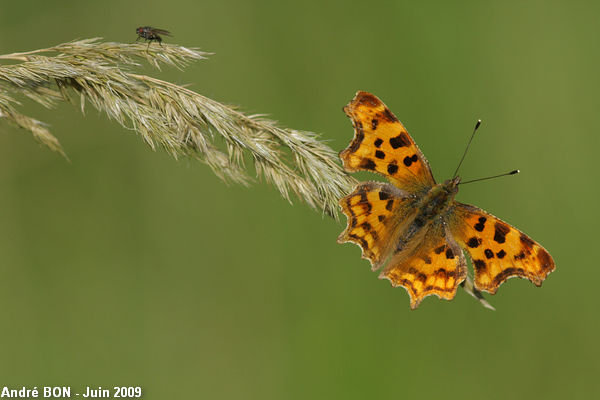
|
I have seen many Comma butterflies, often landed at sunny places, with wide open wings. |
| [To know more about the Comma Butterfly] [Next picture] [Previous picture] [Top] |
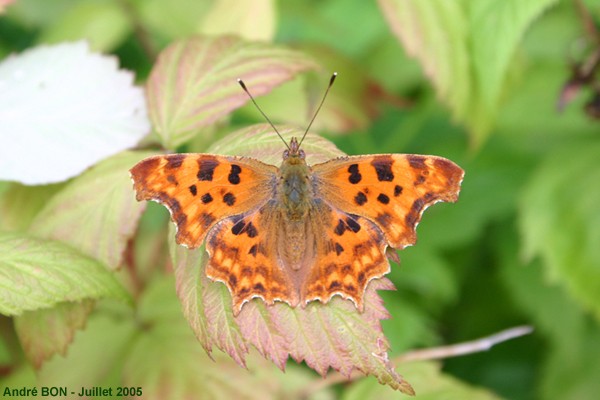
|
Here is a Comma butterfly, landed on raspberry bushes in my garden. Is it because of their sunny location that my raspberry bushes attract so many moths and butterflies? In 2005, I have seen there, Orange tips, Meadow browns, Speckled woods (many), Comma butterflies, Yellow shells and one Hornet moth. |
| [To know more about the Comma Butterfly] [Next picture] [Previous picture] [Top] |
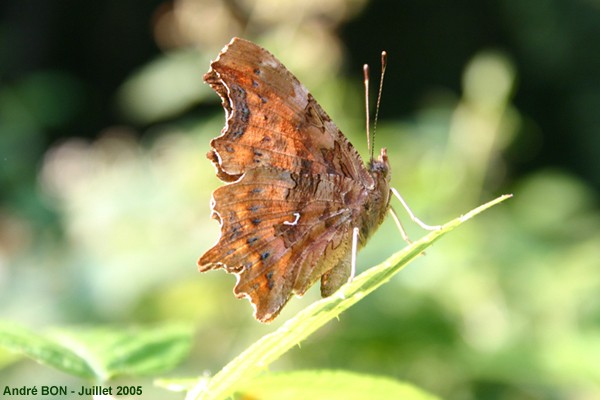
|
Here is a nice view of the C-shaped mark and of the jagged wing edges. |
| [To know more about the Comma Butterfly] [Next picture] [Previous picture] [Top] |

|
I have observed Comma butterflies landed on big trunks, other ones chose smaller supports. |
| [To know more about the Comma Butterfly] [Next picture] [Previous picture] [Top] |
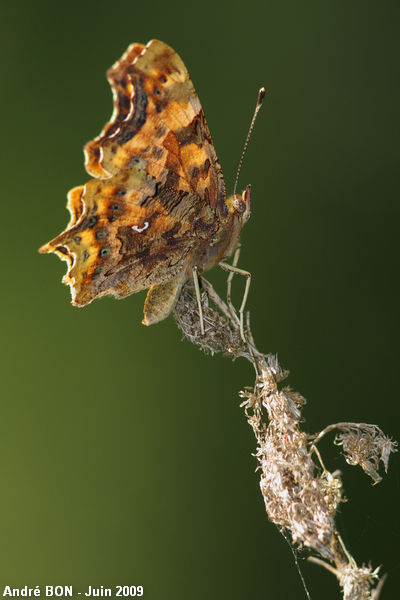
|
Used to landing on this plant, this Comma butterfly often flies back here. |
| [To know more about the Comma Butterfly] [Next picture] [Previous picture] [Top] |
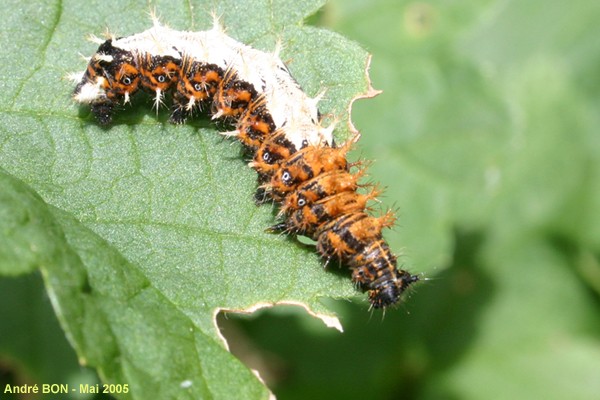
|
I have seen this caterpillar on a Currant bush in my garden. You can clearly see the white dorsal mark. |
| [To know more about the Comma Butterfly] [Next picture] [Previous picture] [Top] |
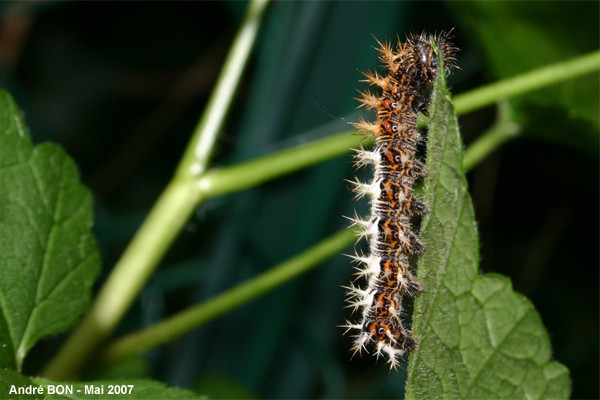
|
Currant bush is really a host plant for the Comma Butterfly as I see caterpillars feeding on it every year. |
| [To know more about the Comma Butterfly] [Next picture] [Previous picture] [Top] |
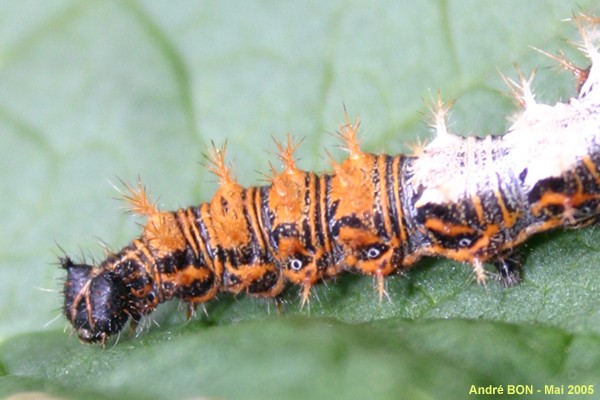
|
Close view of the caterpillar's head. |
| [To know more about the Comma Butterfly] [Previous picture] [Top] |

|
Some time after having observed the caterpillar I found the chrysalis. This one has been later eaten by other insects. |